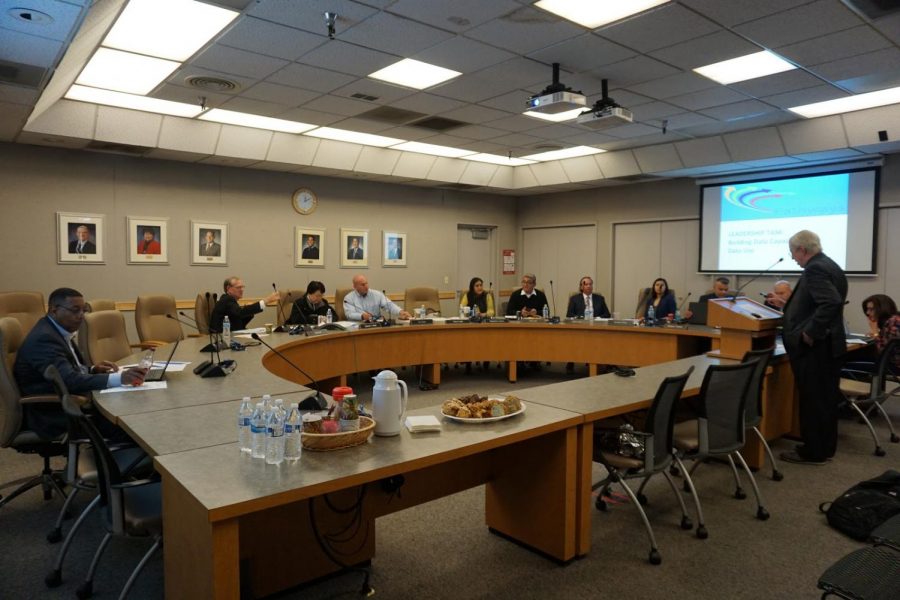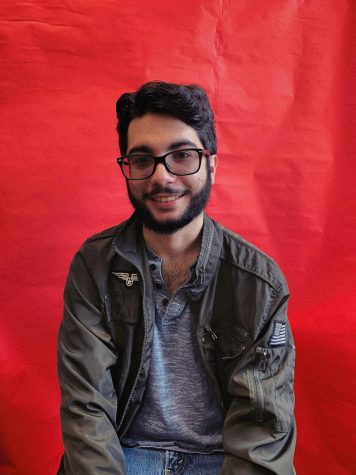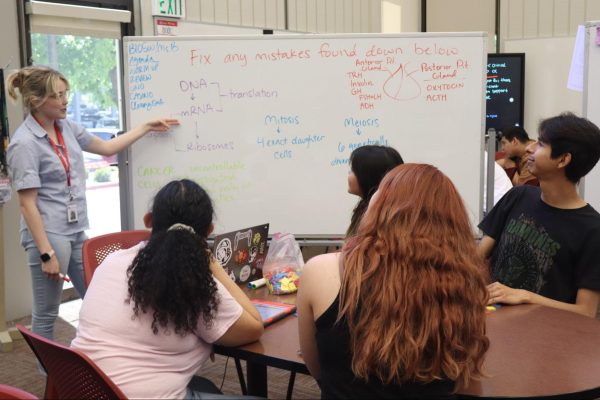Board Reviews a Pathway to Equity and Success
Photo by: Ramon Castanos
Board of Trustees meeting of the Pathway Program talking about how to help students in their education at the district building, March 1.
The Board of Trustees of the State Center Community College District discussed the Guided Pathways system — a program meant to help students succeed by emphasizing student equity in their education — during its meeting on March 1.
Bryan McClenney, the Pathway consultant, described equality as providing everyone, regardless of their height, the same box to see over a high fence. Because of height differences, only one person can see over it.
Equity, McClenney said, is represented by a different image. Everybody has a different sized box, depending on their height, and now they all can see what is behind the fence. and laying out an academic plan to lead them directly to the work field,
In the last image, “there was no fence, just a level playing field,” McClenney said.
“Students come with different skill levels,” Deborah J. Ikeda, president of the board of trustees, said. “It’s up to us to make sure we provide the support necessary, so they get a higher box.”
Community colleges want to, “increase by at least 20 percent the number of students who acquire credentials,” said Trustee John Leal, a trustee. Leal said the goal is achievable, but he was unsure of the the time frame.
Leal asked how the board could increase the number of students transferring to UCs and CSUs annually by 35 percent especially since the body has no control over who gets accepted into a specific university, in this case Fresno State or UC Merced.
“We have an honors program where a student comes in for two years, fulfills the requirements, and is guaranteed a slot to the UC system,” Leal said, “but they just don’t get to pick which one.”
Lead said that another issue facing students is that many of them cannot afford to go outside of the area to study at a different UC or CSU.
“Having a strong partnership,” between the community colleges and the UC or CSU allows students to transfer in their local areas, McClenney said.
McClenney spoke about his review of data involving students’ enrollment numbers in the first semester and his concern about students who show up on the first day of school, but don’t earn any credit in the first semester.
He said a solution to reduce the number of absences would start with making students choose a major. The second part requires closely monitoring students to ensure they “stay on the plan.” McClenney said the last part of the solution is to ensure that students are learning in their classes.
Erik Payne, a board member of SCCCD, asked how the college would be able to contact students who register for a class but do not show up.
“It’s the faculty’s responsibility to report that a student didn’t show up because the faculty keeps in contact with the students,” Ikeda said, adding that it is essential for teachers to talk to their students about why they didn’t show up.
FCC and other community colleges are working to remodel the infrastructure of resources, including implementing Starfish which helps monitor degree plans. If a student doesn’t keep up with their degree plan, Starfish would alert the campus and resources can reach out to the student, said Paul Parnell, chancellor of SCCCD.
“Did we ensure the students took the appropriate college math course or the pathway has been chosen?” McClenney said about the importance of determining that every student takes required courses.
McClenney said colleges in Texas have reported success in ensuring that, “students get the appropriate math course for their majors.” Ikeda replied that math courses are important because if a student doesn’t finish college algebra it means they can’t get a degree or transfer.







